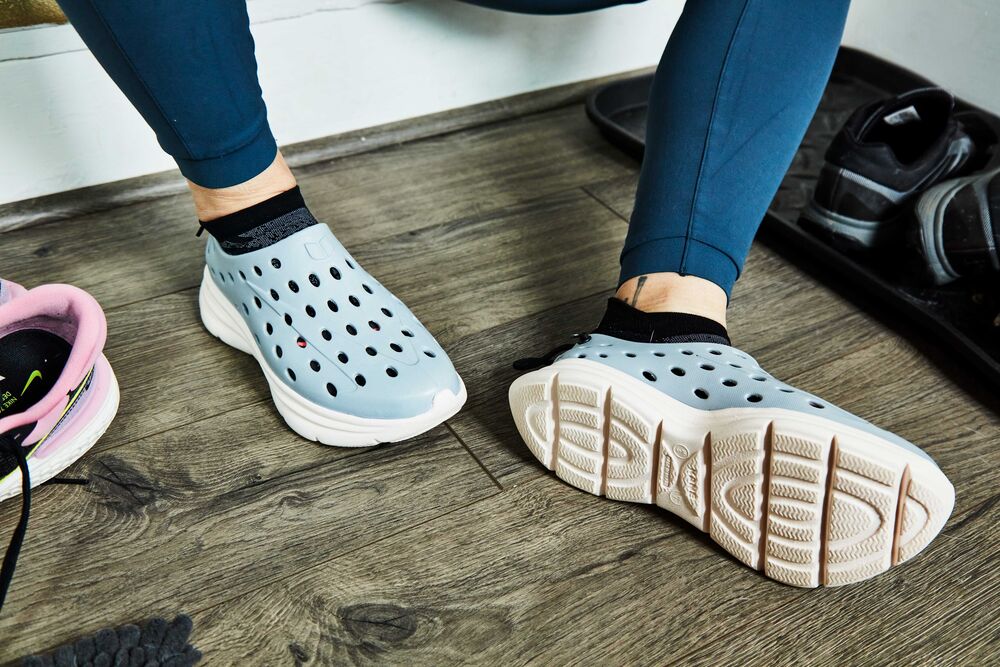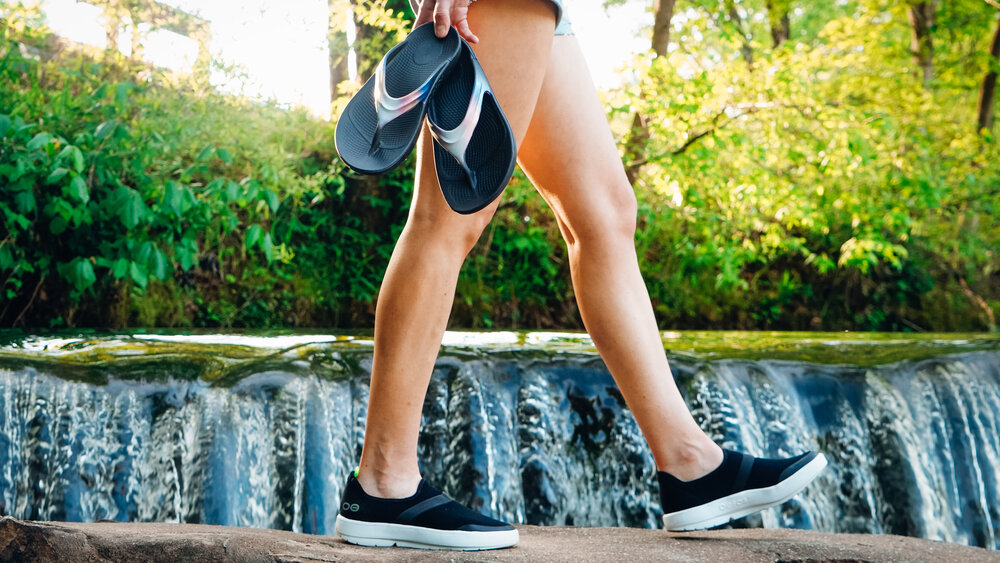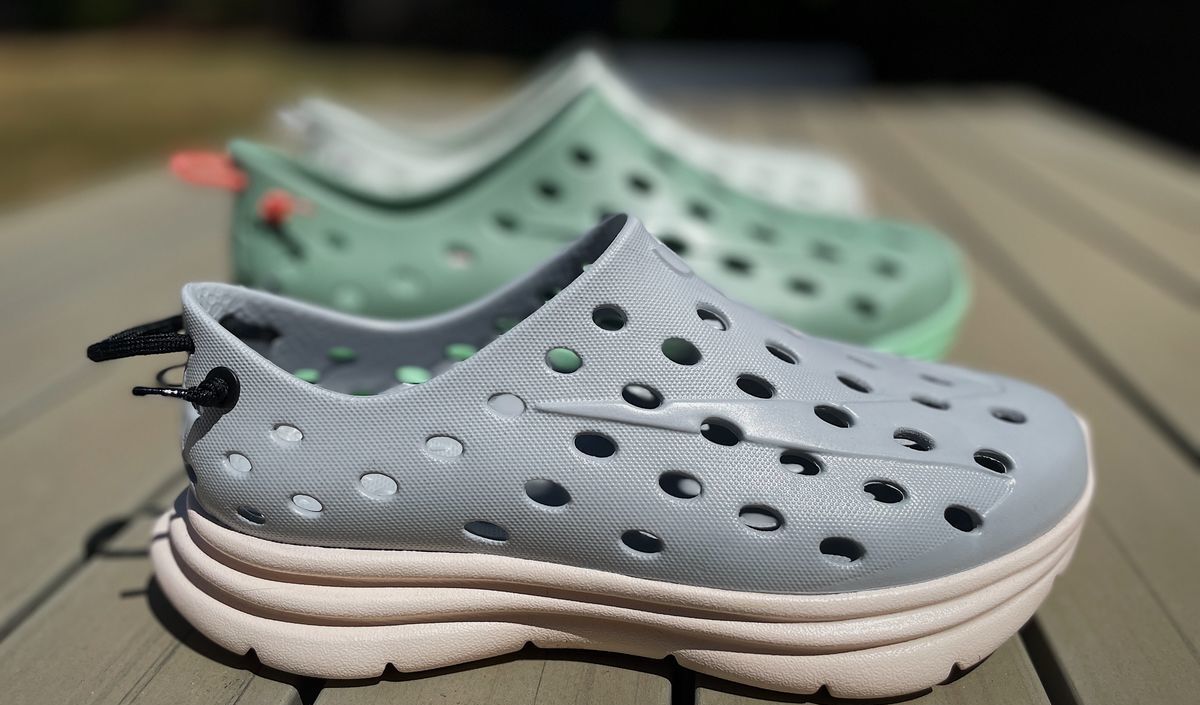Unlocking the Power of Recovery Shoes for Optimal Performance
You can use this widget to input arbitrary HTML code into the page. Invalid HTML code may cause issues with the preview pane.
Exercise and physical activity are essential for our health, both mental and physical. However, it's important to remember that the training doesn't end when you stop exercising. The post-workout period matters to no lesser degree. Recovery shoes can play a big role in helping you get the most out of your workout by relaxing fatigued muscles and accelerating the recovery process. In this article, we will explore the features of recovery shoes, their benefits, and how they can help you get the most out of your workouts.
What are Recovery Shoes and How Do They Work
Recovery shoes are a type of footwear that is designed to support and protect the feet during active or passive recovery. They may bear no visible differences from regular footwear, but they are different in that they have extra cushioning, arch support and shock absorption. This helps reduce post-workout aches and stiffness and diminish the impact running and other activities have on your feet, ankles, knees and hips.
Several features determine the way recovery shoes help your muscles recuperate. The cushioning that few of the maximalist shoes can boast helps to absorb shock and reduce the accumulated strain on your feet. The arch support helps to keep your feet properly aligned while you move, providing a slight but tangible massage while you walk. The sole of recovery boots usually curves slightly upward, thus taking some of the stress and forces off your muscles and joints.
Overall, recovery shoes are an excellent choice for anyone looking to give their feet the deserved respite after a long run or workout. With their unique features designed specifically for active recovery, these shoes can help improve your performance by letting your muscles recover faster.

Benefits of Using Recovery Shoes for Athletes
Athletes looking for a way to reduce post-running aches and stiffness and speed up recovery would benefit immensely from using recovery shoes. It doesn’t have to be shoes: all recovery footwear, including sandals and slip-ons, is designed to provide the feet with extra cushioning and support after a hard workout or race. This type of footwear is especially beneficial for those who spend long days on their feet, be they long-distance runners or warehouse workers.
The main benefit of using recovery shoes is quite obvious, it's the title one: they help wearers recuperate faster. Some result-oriented athletes may often neglect the rule of giving their muscles enough time to recover in pursuit of results. Recovery shoes hasten the onset of the full rest. They also reduce pain, fatigue, and tightness in the feet and legs. In short, they reduce post-workout discomfort and accelerate the recovery process. Everyone regardless of their occupation can make use of features like that.
The benefits provided by recovery boots might sound too good not to make use of them but be wary of turning such footwear into your all-day wear. Recovery boots are more prone to wear since the materials used in their production are not meant for prolonged pressure. Recovery boots simply can't support your feet over a long period. That’s why we mentioned they are usually used after workouts and not some other time.

How To Choose Recovery Shoes
Choosing the right recovery shoes is an activity not too complicated, but it certainly has its guideline. The thing is, all recovery shoes don’t share the same design. There are several shoe models that can feature recovery elements, and those very elements might be implemented differently. When selecting a pair of recovery shoes, the main factors to consider such as arch support, toe box size, and type of recovery (active vs. non-active).
Arch support is the element that, unsurprisingly, supports the arch of your foot to reduce pain. It’s an important feature to consider as the degree of arch support can be different. Good recovery shoes should support all four arches of your foot, placing it in the perfect position.
Usually, there is only enough room for the toes not to be packed like sardines. Thus, the toe box size should also be considered since it directly affects the well-being of your toes. They need enough space to breathe, spread, and just chill, especially after an hours-long spat with the pavement. A wide forefoot allows tired and swelling feet to recover from the stress.
Additionally, you should decide on the type of recovery. Active recovery involves some light, low-intensity activities like walking or stretching. As you can imagine, shoes for active recovery will provide a bit more of everything than shoes for passive recovery since there is still some action involved. Since passive recovery means letting your body rest in the most inactive manner, such shoes need less cushioning and arch support.
Personal comfort should also be taken into account. Make sure the recovery shoes fit properly and don’t cause any discomfort or pain while wearing them. Taking into account these factors will help narrow down your choices and find the best option for your needs.

Recovery Shoes Care and Maintenance
Taking good care of your recovery shoes is essential for ensuring that they last and continue to provide the support and cushioning you need. Here are a few tips for proper care and maintenance.
First, make sure to only wear your shoes for the post-workout period. The comfort they offer might tempt you into using them as your running or everyday shoes, but this will only make them lose their helpful qualities faster. Whether you rest passively or do little activity, take them off when you’re done resting.
Second, rotate between two pairs of recovery shoes. Doing this allows one pair to rest properly while you’re using the other, which helps keep both pairs in tip-top condition.
Third and final, store your shoes in a cool, dry place such as a closet shelf or drawer away from direct sunlight. This will help keep them from warping over time and keep their soles from becoming dry and brittle. Don’t forget to clean them every now and then.
Conclusion
Recovery shoes are a true asset for everyone looking for a means to let their feet recuperate faster. They create an environment optimal for a speedy recovery and give your feet the rest they deserve. However, it’s important to remember that, however comfortable they might feel, they are first and foremost meant for short-term wearing. If you turn recovery shoes into your regular shoes, they will soon lose their qualities. For that reason, it is important to wear them an hour or two after the workout. By following some easy tips, you can find the pair of recovery shoes that will work best for your personal needs.
FAQs
What are recovery shoes?
Recovery shoes are specially designed shoes that allow your feet and body to rest and recover after a hard workout. They typically have extra features that provide maximum comfort for aching muscles and joints. Many recovery shoes are also lightweight and breathable which helps keep your feet cool during and after activity. Recovery shoes can be used for inactive rest and light activity.
How do recovery shoes work?
Recovery shoes work by providing extra support and cushioning that helps to reduce pain and fatigue in the feet and body. The design of recovery shoes includes arch support and extra cushioning with shock absorption technology to reduce pain and swelling. The lightweight materials used in some recovery shoes also aid in keeping feet cool while promoting air circulation. All these features combine to provide maximum comfort for athletes both during and after exercise.
Who can benefit from wearing recovery shoes?
Anyone who exercises regularly can benefit from wearing recovery shoes. From runners to weight lifters and soccer players, athletes of all kinds can find relief from soreness and fatigue by using recovery shoes. They are also beneficial for people who spend their days on foot.
How do I choose the right recovery shoes for me?
When choosing recovery shoes, it’s important to consider two factors: the style of resting and personal comfort. You can rest passively or actively, and according to that, would need different footwear. Personal comfort should also be considered, as these shoes are meant first and foremost for resting, and there could be no rest without comfort.
EXPLORE POPULAR ARTICLES
-
Why Running Socks Are Actually the Best Gift for Runners
Dec 24th 2025Giving socks as a gift usually feels… safe. Boring, even. It’s the backup plan when you don’t know w
-
Join Our X-Mas Blind Box Shenanigans
Dec 22nd 2025Remember that feeling? Sitting on the floor, shaking a wrapped box, trying to guess what’s inside? T
-
Run Bright, Stay in Sight: Reflective Gear for Night Running
Dec 10th 2025When winter comes, the days get shorter, and the sun sets before we’re done with our day. If you’re





